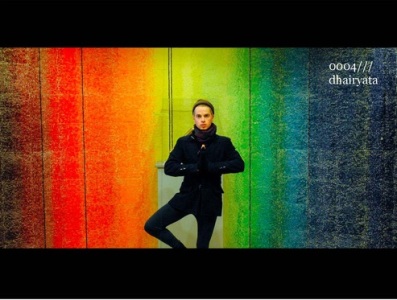Academic yoga course stimulates students' creativity
February 7, 2013
Share
 The above photo is one of many in a photo-journal created by student Jesse Cranin (Artsci'13) for the class Yoga in India and the West.
The above photo is one of many in a photo-journal created by student Jesse Cranin (Artsci'13) for the class Yoga in India and the West.A course that takes a critical look at the phenomenon of yoga in the west is pushing students to explore their creative and intellectual limits.
Ellen Goldberg (School of Religion) has been teaching RELS 322: Yoga in India and the West for several years. This fall she added a twist to the popular course – the option of a creative project of the student’s choosing. The project had to explore an element of yoga studied in the course – such as the physical, spiritual or artistic aspects of the philosophy – but the theme could be expressed in any form, such as music, drawing, painting or photography.
“The students created some amazingly beautiful artwork. I am so impressed by their efforts and the level of dedication they put into these projects,” says Dr. Goldberg. “Something happened in this class – there was magic. The students really connected with the material and used the projects as a way to engage with both the non-intellectual and intellectual sides of the philosophy.”
In addition to the creative project, which includes an essay component, students take 10 hours of yoga classes with a resident yoga teacher and write reports of their experiences.
“Learning the physical practice of yoga gives students the opportunity to digest what they are learning in class,” Dr. Goldberg says. “They get to be the participant and think critically about the tradition of yoga through the lens of an observer.”
Josh Mejia (Artsci’14), who took the course in the fall, has been practising yoga for several years. He wanted to take the time to look at it critically and explore both the spiritual and practical elements. With fellow student Connie Winberg (Artsci’14), Mr. Mejia made a mandala for the creative project. Mandalas are artistic compositions of geometric patterns and symbols often used in Hinduism and Buddhism as spiritual teaching tools.
“We wanted to focus on the art and culture elements of yoga, not just the physical,” says Mr. Mejia. “Mandalas bring in the meditative and spiritual components. In a video of our mandala, we created a version of it in different colours of sand and then destroyed it, showing the impermanence of all things.”
Several of the students’ projects, including Mr. Mejia’s and Ms. Winberg’s video, have been posted on Pinterest.